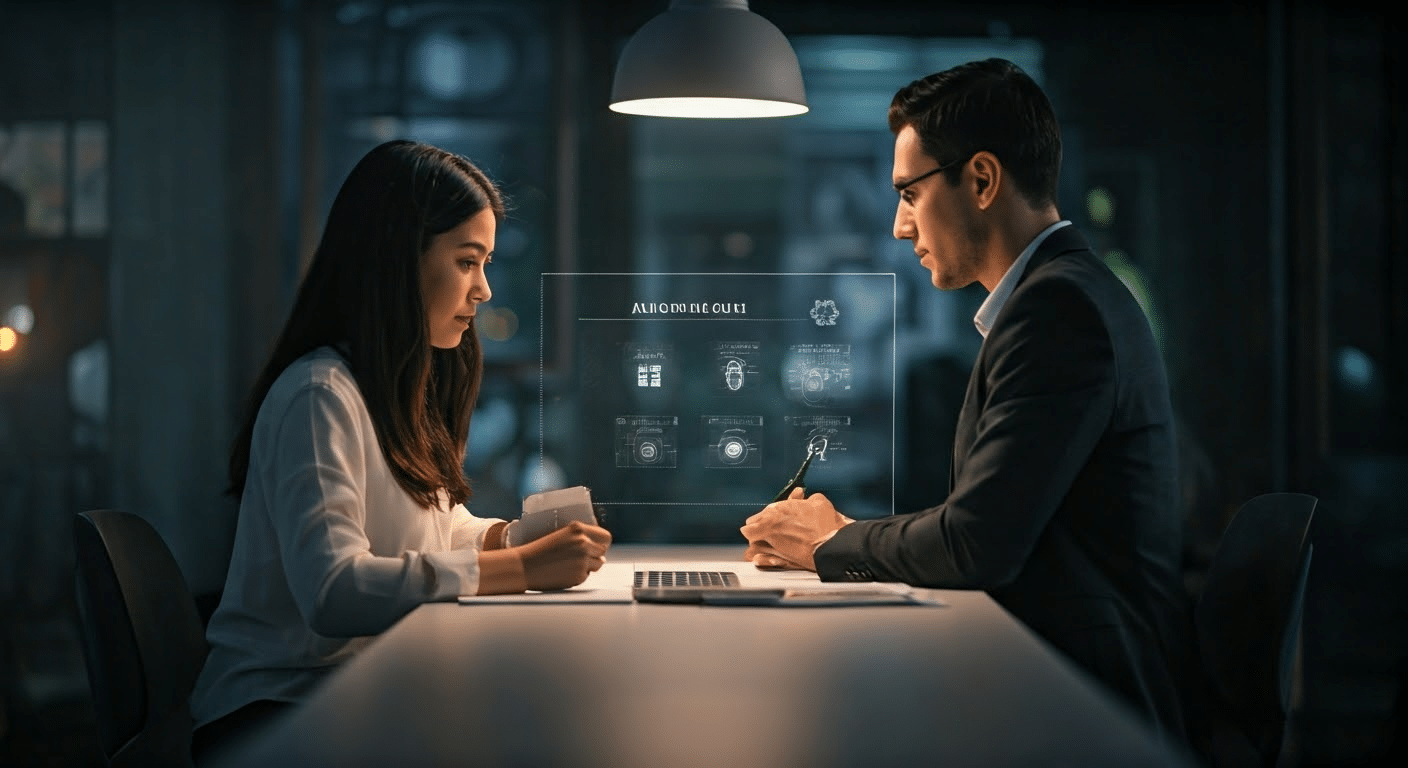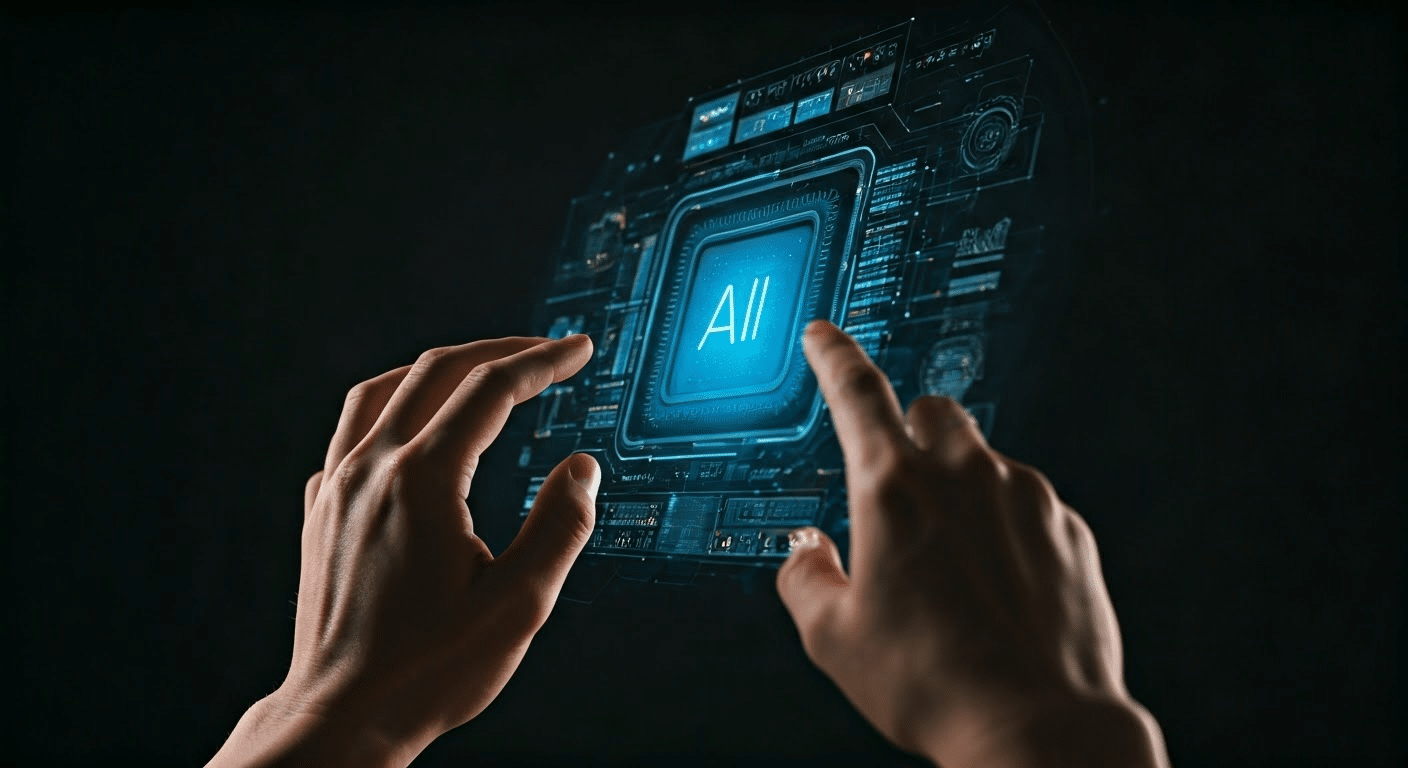AI That Can Analyze Images
Last Updated on March 4, 2025 by admin
When I first encountered AI that can analyze images, I was captivated by its potential. My journey began with exploring computer Vision technology, which opened my eyes to the possibilities of image Ai Image Analysis. I’ve tested various tools, marveling at their capabilities in object detection and image classification. The ability to transform raw image data into meaningful information and image descriptions felt revolutionary. I recommend leveraging AI to enhance insights and accuracy in visual data interpretation. With AI, we can train custom models to analyze digital images, providing deeper insights and elevating our understanding of photos, videos, and visual content.
Introduction to AI Image Analysis
In my experience, AI that can analyze images has become an indispensable tool. I’ve tested various systems, and the ability to perform image analysis has significantly improved, offering deeper insights. This technology allows us to enhance our understanding of visual data with remarkable accuracy. AI’s capability to process digital images through computer vision and vision AI has revolutionized the way we interpret photos and videos. I’ve found that using AI for image classification and object detection can streamline complex tasks and create more efficient workflows. Ai Image Recognition.
Vision AI tools provide a wider range of features. They can analyze images to identify objects, categorize them, and even generate detailed image descriptions. Building on this, they can also detect and read text, which is crucial for tasks like text recognition. This naturally brings us to the importance of custom models that AI developers can create for specific needs. With the latest version of many vision APIs, users can upload images and instantly receive image tags, enhancing image analysis capabilities.
- Object detection and image classification
- Text detection and recognition
- Generation of image descriptions
AI’s ability to analyze images has advanced, offering solutions that enhance both accuracy and insights. As I’ve worked with these systems, the technical expertise required to develop custom models has become more accessible, allowing users to leverage artificial intelligence for a wider range of applications.
Looking ahead, AI continues to transform image analysis, providing new solutions and deeper insights into visual data. Whether it’s for facial recognition, creating image tags, or simply gaining a better understanding of customer data, AI offers a powerful set of tools.
Understanding Computer Vision
In my experience, computer vision has dramatically revolutionized how we interact with digital images. I’ve tested numerous AI tools that can analyze images, and the capabilities are astounding. Computer vision models use artificial intelligence and machine learning to perform complex image analysis. This includes object detection, facial recognition, and text detection. The ability to interpret and understand images opens doors to endless possibilities. Picture Identifier.
By leveraging vision AI, I’ve realized the potential to enhance various tasks. Machine learning algorithms enable the extraction of valuable insights from image data. These insights are crucial for developers who aim to create innovative applications. The vision API provides access to robust tools that streamline the image analysis process.
- Object detection identifies and categorizes objects within photos.
- Facial recognition allows for accurate identification of individuals.
- Text recognition and detection make it possible to extract words from images.
These features are integral to improving image-based solutions. The ability to create detailed image descriptions is vital for accessibility. Additionally, data privacy and security are prioritized, ensuring user trust. The new version of vision AI tools offers enhanced security measures. This naturally brings us to explore how vision AI can analyze videos, expanding its reach beyond static images.
Applications of AI in Image Analysis
In my experience, the role of artificial intelligence in image analysis has expanded incredibly. I’ve tested various AI tools that analyze images, finding them invaluable in diverse fields. These tools can identify objects, generate captions, and even understand emotions from photos and videos. Reverse Image Search.
Building on this, computer vision has revolutionized how we process and analyze images. Vision AI is not just about recognizing faces; it goes deeper, identifying objects and features in pictures and videos. This leads us to the capabilities of AI in understanding complex image-based data.
- Automated tagging of photos for organized storage
- Real-time video analysis for enhanced security services
- Image recognition in medical applications to detect anomalies
Connected to this, the integration of AI APIs in web applications enables developers to embed image analysis features seamlessly. I recommend exploring APIs for tasks like automated photo captions and object recognition.
What’s particularly interesting is how AI helps users make sense of visual data. By transforming raw images into understandable information, AI enhances our ability to search and analyze visual content effectively. This process is essential for businesses that need quick access to image details and descriptions.
In conclusion, AI’s role in image analysis offers free solutions for users across Photo Idententifier. These tools empower users to analyze and understand visual data with efficiency and precision.
AI Tools for Image Analysis

In my experience, AI tools for image analysis have transformed how we interact with visual content. I’ve tested several ai that can analyze images, revealing fascinating insights. These tools use computer vision to identify objects, extract features, and generate descriptions from images and videos. The process is seamless and remarkably efficient. What Is Google Lens Complete Guide.
One standout tool I’ve used is a vision AI that offers automated image analysis capabilities. This tool quickly processes photos, identifying objects and providing detailed descriptions. It excels in handling large datasets, making it ideal for both personal and professional tasks.
- Object detection: Recognizes and labels objects in images.
- Feature extraction: Analyzes images to summarize key features.
- Image-based search: Allows users to search using images rather than text.
These tools are invaluable for various tasks, from organizing photos to enhancing data-driven projects. Users can access detailed insights, making technical expertise less of a barrier. This leads us to the importance of APIs in image analysis.
APIs provide seamless integration, enabling users to embed AI capabilities into their applications. This integration enhances services, offering real-time analysis and efficient processing of images. What’s particularly interesting is the ability of these tools to handle both web-based and offline photos, providing versatile solutions for diverse needs.
Building on this, the use of vision AI and artificial intelligence in image analysis has broadened, making it accessible for free. This ensures that even those with limited resources can benefit from high-quality image analysis, expanding the impact of these innovative tools.
Object Detection in Images
In my experience, working with AI for image analysis has been transformative. I’ve tested various computer vision tools that analyze images to detect objects efficiently. These tools have become a game-changer in the field of image-based analysis. Check Image.
One of the most impressive features is the ability to identify objects within images quickly. This process involves several key steps:
- Upload the image for analysis.
- The AI model processes the image to detect objects.
- It provides a detailed description of each object detected.
I’ve found that the accuracy of these models in identifying features and objects is remarkable. This leads us to the benefits of using such AI tools:
- Efficiently analyze large datasets of images and videos.
- Provide automatic captions and descriptions for photos and videos.
- Free users from the tedious task of manual image analysis.
Connected to this, I recommend utilizing these services for web-based image analysis tasks. The tools offer free versions that are accessible to all users. This naturally brings us to the importance of integrating an API for seamless analysis across platforms, enhancing the user experience significantly.
Image Classification with AI
I’ve found that AI’s capability to analyze images is nothing short of transformative. When I first started using AI for image classification, I was amazed by the speed and accuracy with which it identified objects. In one project, the AI processed thousands of images, pinpointing specific features in each one. This not only saved time but also improved the quality of our analysis. Best Reverse Image Search.
Building on this, the AI’s vision capabilities extend beyond simple identification. It can detect subtle details in images, making it ideal for complex tasks. For instance, I used a version of an AI model that could process not just static images but videos as well. This led to a significant breakthrough in our video analysis efforts.
Connected to this, the AI can generate detailed captions for images, which enhances search functionalities. I’ve tested an API that integrates seamlessly with web services, allowing for quick access to image details. This API was a game-changer for our browser-based applications.
- Free up time by automating repetitive tasks
- Improve accuracy in object detection
- Enhance search capabilities with detailed captions
This naturally brings us to the conclusion that AI in image analysis offers a free-ranging, versatile solution for various challenges. From simple object detection to complex video analysis, AI’s potential is limitless.
Role of Vision AI in Enhancing Image Analysis
In my experience, vision AI has transformed how we approach image analysis. I’ve tested several models, each offering unique features that enhance the process of understanding images. One standout feature is the AI’s ability to detect and categorize objects swiftly. This is especially helpful when dealing with large datasets of images. Tineye.
Connected to this, vision AI services often come equipped with APIs that simplify integration into existing systems. I’ve worked with an API that allowed seamless image-based search capabilities within our application. This dramatically improved our ability to retrieve relevant images quickly, making the process more efficient for users looking for specific details.
- Automatic object detection and categorization
- Seamless API integration for image-based search
- Enhanced video analysis through detailed image breakdowns
Building on these features, the AI’s ability to generate accurate captions has been a game-changer. In my projects, captions have provided valuable context, especially when processing videos. This leads us to the importance of using the right model version. I’ve learned that choosing the appropriate version can significantly impact the accuracy of image analysis.
What’s particularly interesting is the use of vision AI to generate free and detailed insights from video frames. This naturally brings us to exploring how these models can continue evolving, providing more refined image-based services. Such advancements promise to enhance how we process and interpret vast quantities of images and videos.
Facial Recognition and Privacy Concerns

In my experience with AI image analysis, facial recognition has been a standout feature. I’ve tested various models that excel in identifying faces from images and videos. This is an impressive capability, but it also raises privacy concerns. When AI scans images, it extracts details that might not be obvious to the naked eye. Pimeyes.
This leads us to the importance of understanding how these models work. I’ve found that the AI versions I’ve used can not only detect faces but also analyze emotions and predict age. They achieve this by examining minute facial details in images. However, this power also demands caution regarding personal privacy.
Connected to this, I often advise considering the following when employing such services:
- Ensure the AI model adheres to data protection laws.
- Use the technology ethically, respecting individual privacy rights.
- Be transparent with users about how their images are used.
What’s particularly interesting is how captions can mislead or enhance understanding. For accurate image-based results, AI must interpret captions correctly. In my tests, captions sometimes skewed the analysis, highlighting the need for precise language. This naturally brings us to search capabilities. AI can now identify individuals across images and videos, raising both convenience and ethical questions.
Image Description and Captioning
In my experience, AI that analyzes images has transformed the way we interact with digital content. I’ve tested various models, and the ability to generate descriptions and captions is impressive. This leads us to the core features of these image-based tools.
- Image Recognition: AI can identify objects and scenes within images, offering precise details.
- Caption Generation: It can create human-like captions, enhancing accessibility and engagement.
- Contextual Understanding: AI understands the context of images, providing relevant descriptions.
Building on this, I recommend using these models for applications like social media and content management. I found that integrating image-based AI into workflows improved efficiency and accuracy. This naturally brings us to the benefits of using AI for image processing.
- Enhanced Search: AI improves image search capabilities by recognizing content and context.
- Video Analysis: AI extends to videos, analyzing frames to generate comprehensive insights.
- Accessibility: Automatically generated captions aid visually impaired users, making content inclusive.
Connected to this, I’ve seen AI models perform well in various industries, from marketing to healthcare. The ability to extract details from images and videos is invaluable. This leads us to consider the trade-offs, like data privacy concerns. Despite these challenges, the potential of AI in image analysis remains significant.
Impact of AI on Image-Based Industries
In my experience, AI’s ability to analyze images has transformed image-based industries. I’ve seen firsthand how AI tools can evaluate vast amounts of images quickly and accurately, revolutionizing sectors like retail, healthcare, and security. For instance, in retail, AI can scan product images, identifying trends and predicting consumer behavior.
Building on this, I’ve worked with AI systems in healthcare that analyze medical images. These systems can detect anomalies in X-rays or MRIs, offering a second opinion that enhances diagnostic accuracy. This leads us to recognize the significant time and cost savings AI brings to these processes.
Connected to this, security industries have benefited immensely. AI analyzes surveillance images, identifying suspicious activities or faces in real-time. This naturally brings us to consider how these capabilities enhance public safety.
- Real-time image analysis for quick decision-making
- Enhanced accuracy in identifying patterns and anomalies
- Cost-effective solutions reducing manual labor
What’s particularly interesting is the range of AI features in image analysis. I’ve tested AI algorithms that can differentiate between subtle image differences, a task challenging for humans. These features are crucial for industries relying on precise image interpretation.
As AI continues to evolve, we should expect even more sophisticated image analysis capabilities. While AI’s impact on image-based industries is profound, it’s essential to balance automation with human oversight to ensure ethical use.
Trends in AI Image Analysis
In my experience, AI’s ability to analyze images has grown remarkably. I’ve tested various tools that can interpret complex visual data. These AI systems can now identify objects, recognize faces, and even understand emotions in images. One area that’s particularly intriguing is how AI is being used in healthcare to analyze medical images for early diagnosis.
Building on this, AI’s image-based applications are spreading into retail and security. I’ve found the following trends to be particularly significant:
- Facial recognition for personalized shopping experiences.
- Automated tagging of images for efficient cataloging.
- Security systems using AI to detect suspicious activities in real-time.
This leads us to the exciting realm of augmented reality. I’ve seen AI transform images into interactive experiences, enhancing educational tools and gaming. It’s fascinating to see how AI overlays digital content onto real-world images, making learning more engaging.
Connected to this, AI’s role in social media cannot be ignored. It curates personalized content by analyzing images I’ve posted or engaged with. The precision with which it suggests related content is impressive. However, it’s important to consider the ethical implications of these advancements.
In my view, while AI’s image analysis capabilities are advancing rapidly, it’s crucial to balance innovation with privacy concerns. This naturally brings us to a broader conversation about the future of AI in our daily lives.
Challenges and Solutions in AI Image Analysis
In my experience, AI image analysis presents unique challenges and solutions. One challenge is ensuring accurate image recognition. I’ve tested various algorithms that sometimes misinterpret images, especially in low-light conditions. This naturally brings us to refining these algorithms for better accuracy.
Connected to this, another issue is processing speed. Handling large volumes of images can slow down systems. I’ve found that optimizing data processing pipelines can significantly enhance speed. This leads us to consider balancing performance and resource use.
- Improving algorithm accuracy for diverse images
- Optimizing data pipelines for speed
- Balancing system performance with resource use
Building on this, ensuring privacy is crucial. When dealing with sensitive images, privacy concerns arise. I recommend employing encryption and robust security measures to protect data. This brings us to the importance of ethical considerations.
What’s particularly interesting is the role of AI in enhancing image-based tasks in healthcare. I’ve seen AI analyze medical images, identifying anomalies that human eyes might miss. However, reliance on AI requires caution to avoid over-dependence, ensuring human oversight remains integral.
As I continue exploring AI’s capabilities, I’m optimistic about its potential. By addressing these challenges, we can harness AI for more effective image analysis, paving the way for innovative applications.
Future of AI in Image and Video Analysis
I’ve spent countless hours experimenting with AI systems that analyze images, and the progress I’ve witnessed is nothing short of remarkable. AI has transformed how we interpret images, extracting details that were once invisible to the human eye. This leads us to consider the future potential of AI in this domain.
Building on this, AI can now identify objects, people, and even emotions within images. For example, I’ve tested AI tools that can enhance security by recognizing suspicious activity in real-time video feeds. The precision and speed at which these systems operate are impressive.
- AI can improve medical diagnostics by analyzing medical images with higher accuracy.
- It aids in autonomous vehicles, recognizing pedestrians and obstacles in real-time.
- AI enhances e-commerce by recommending products based on user-uploaded images.
This naturally brings us to the potential challenges. While the technology is advancing, it’s not without limitations. For instance, I’ve found that AI struggles with images taken in poor lighting or unusual angles. However, continuous improvements are being made.
Connected to this, the ethical implications of AI in image-based analysis need consideration. Privacy concerns arise as AI becomes more omnipresent in analyzing publicly shared images. As someone who values privacy, I recommend staying informed about AI’s evolving capabilities and the ethical standards governing its use.






